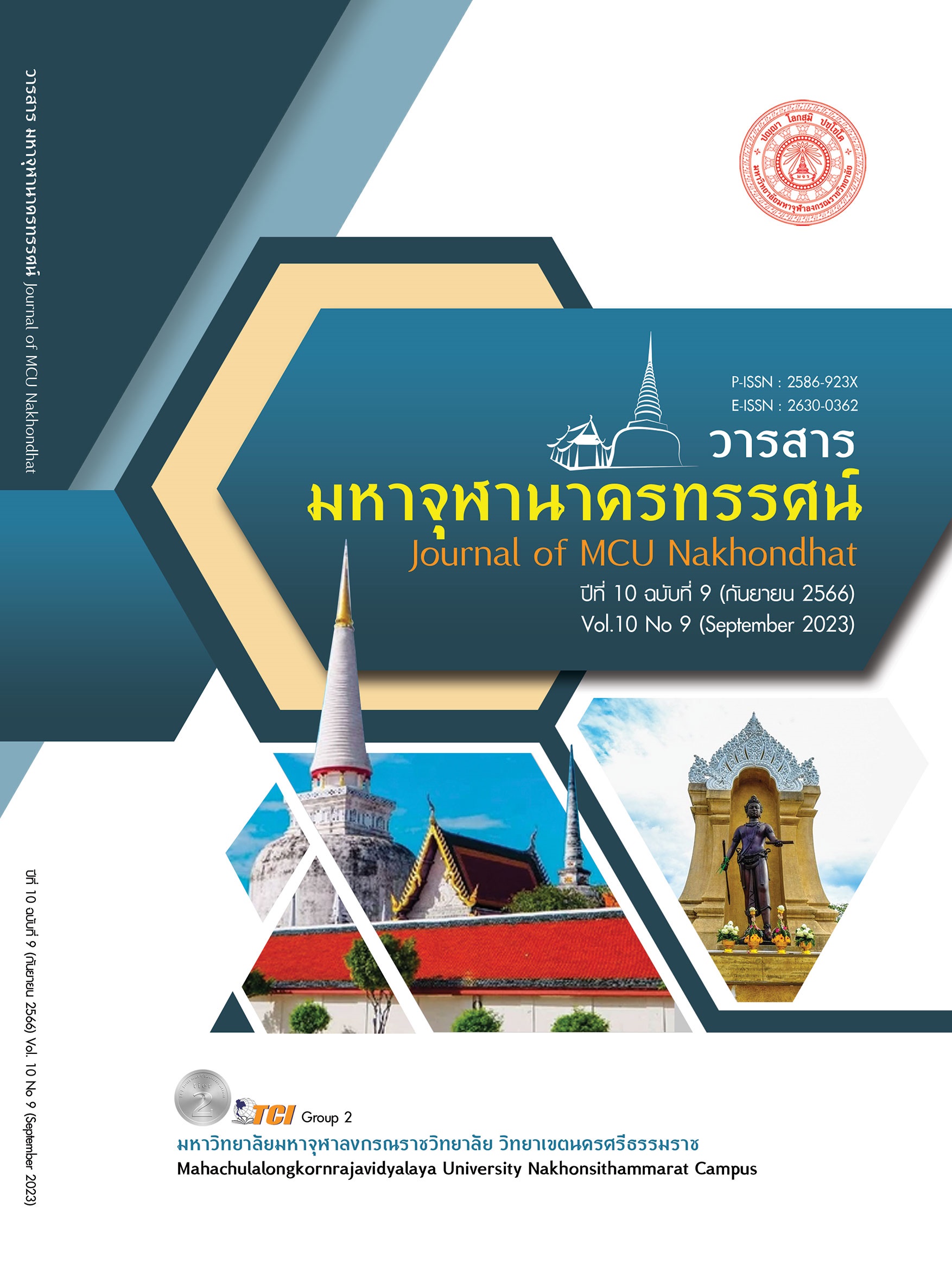A STUDY EFFECT OF LEARNING COGNITIVE GUIDED INSTRUCTION AND THINK - PAIR - SHARE TECHNIQUE IN INEQUALITY ON THE MATHEMATICAL PROBLEMS SOLVING ABILITY AND MATHEMATICAL COMMUNICATION ABILITY OF NINTH GRADE STUDENTS
Main Article Content
Abstract
The purposes of this research were 1) to compare mathematical problem - solving ability and the mathematical communication ability of Mathayomsuksa III students on the subject of the inequality before and after obtaining Cognitive Guided Instruction and Think - Pair - Share technique 2) to compare mathematical problem - solving ability and the mathematical communication ability of Mathayomsuksa III students on the subject of the inequality obtaining Cognitive Guided Instruction and Think - Pair - Share technique with the criterion of 70%. The subjects of the study were 31 Mathayomsuksa III students. They were randomly selected by using cluster random (Cluster Random Sampling). The instrument use in data collection were 1) Teaching Plan Mathayomsuksa III students on the subject of the inequality 2) The mathematics problem - solving abilities and mathematical communication competency test. The data were statistically analyzed by using t - test for independent samples. The finding were as follows: 1) The mathematics problem-solving ability of the experimental group after obtaining Cognitive Guided Instruction and Think - Pair - Share technique on the subject of the inequality was statistically higher than before learning and statistically higher than 70 percent criterion at the .05 level of significance. 2) The mathematics communication ability of the experimental group after obtaining Cognitive Guided Instruction and Think - Pair - Share technique on the subject of the inequality was statistically higher than before learning and statistically higher than 70 percent criterion at the .05 level of significance.
Article Details

This work is licensed under a Creative Commons Attribution-NonCommercial-NoDerivatives 4.0 International License.
References
จิตติมา ชอบเอียด. (2551). การใช้ปัญหาปลายเปิดเพื่อส่งเสริมทักษะการให้เหตุผลและทักษะการสื่อสารทางคณิตศาสตร์ของนักเรียนชั้นมัธยมศึกษาปีที่ 1. กรุงเทพมหานคร: มหาวิทยาลัยศรีนครินทรวิโรฒ.
ชัยวัฒน์ อุ้ยปาอาจ. (2552). ผลการใช้แนวการสอนแนะให้รู้คิดในการจัดกิจกรรมการเรียนรู้คณิตศาสตร์ที่มีต่อความสามารถในการแก้ปัญหาคณิตศาสตร์และเจตคติต่อวิชาคณิตศาสตร์ของนักเรียนชั้นมัธยมศึกษาปีที่ 2. ใน วิทยานิพนธ์ปริญญามหาบัณฑิต สาขาวิชาหลักสูตรการสอนและเทคโนโลยีการศึกษา. จุฬาลงกรณ์มหาวิทยาลัย.
ธีรพล พากเพียรกิจ. (2558). ผลของการจัดกิจกรรมการเรียนรู้ โดยใช้แนวคิดโมเดลเมธอดและการเรียนการสอนแบบแนะให้รู้คิดที่มีต่อความสามารถในการแก้ปัญหาทางคณิตศาสตร์ของนักเรียนชั้น มัธยมศึกษาปีที่ 2. ใน วิทยานิพนธ์มหาบัณฑิ่ต สาขาการศึกษาคณิตศาสตร์ . จุฬาลงกรณ์มหาวิทยาลัย.
ล้วน สายยศ และอังคณา สายยศ. (2538). เทคนิคการวิจัยทางการศึกษา. กรุงเทพมหานคร: สุวีริยาสาส์น.
สถาบันทดสอบทางการศึกษาแห่งชาติ. (2563). ค่าสถิติพื้นฐานคะแนน O - NET ปีการศึกษา 2561 และปีการศึกษา 2562v. เรียกใช้เมื่อ 3 พฤษภาคม 2363 จาก http://www.newonetresult.niets.or.th/AnnouncementWeb/School/ReportSchoolBySchool.
สุคนธ์ สินธพานนท์. (2545). การจัดกระบวนการเรียนรู้ที่เน้นผู้เรียนเป็นสำคัญตามหลักสูตรการศึกษาขั้นพื้นฐาน. กรุงเทพมหานคร: อักษรเจริญทัศน์.
สุพีรา ดาวเรือง. (2563). การพัฒนารูปแบบการเรียนแบบผสมผสานโดยใช้การเรียนรู้แบบกิจกรรมเป็นฐานและเทคนิคเพื่อนคู่คิดบนวิกิเพื่อส่งเสริมความสามารถในการแก้ปัญหาอย่างสร้างสรรค์ สำหรับนักเรียนมัธยมศึกษาปีที่ 3. ใน วิทยานิพนธ์ปริญญาครุศาสตรมหาบัณฑิต สาขาวิชาเทคโนโลยีและสื่อสารการศึกษา. จุฬาลงกรณ์มหาวิทยาลัย.
Carpenter, et al. (1989). Teachers American Educational. Research Journal, 30(3), 555 - 558.


